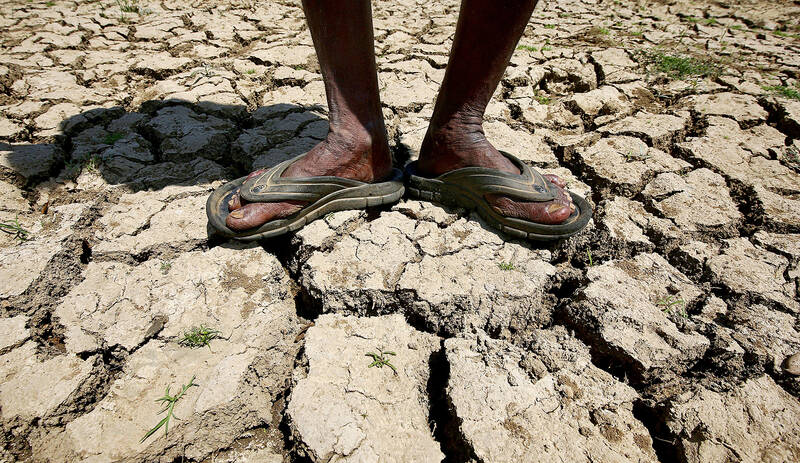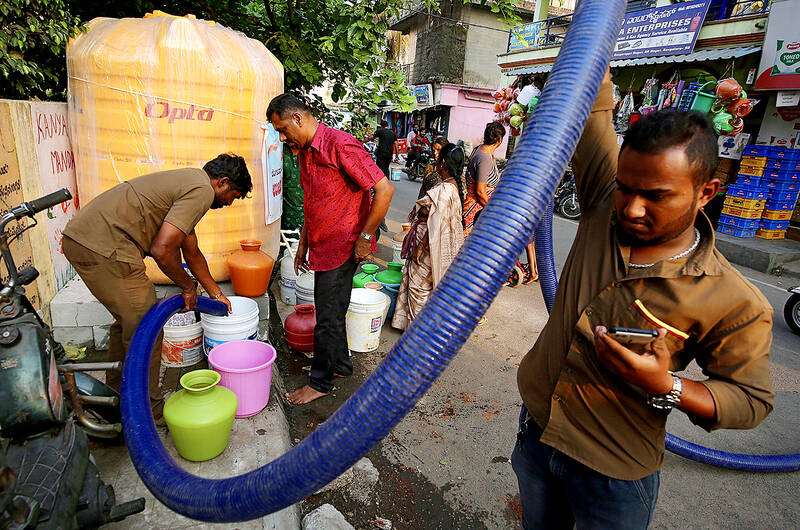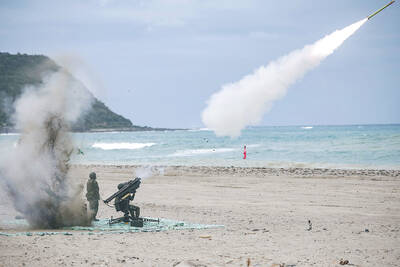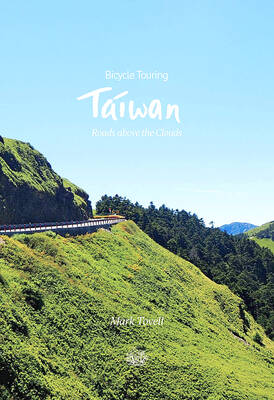Bhavani Mani Muthuvel and her family of nine have around five 20-liter buckets worth of water for the week for cooking, cleaning and household chores.
“From taking showers to using toilets and washing clothes, we are taking turns to do everything,” she said. It’s the only water they can afford.
A resident of Ambedkar Nagar, a low-income settlement in the shadows of the lavish headquarters of multiple global software companies in Bengaluru’s Whitefield neighborhood, Muthuvel is normally reliant on piped water, sourced from groundwater. But it’s drying up. She said it’s the worst water crisis she has experienced in her 40 years in the neighborhood.

Photo: EPA-EFE
CLIMATE BREAKDOWN
Bengaluru in southern India is witnessing an unusually hot February and March, and in the last few years, it has received little rainfall in part due to human-caused climate change. Water levels are running desperately low, particularly in poorer areas, resulting in sky-high costs for water and a quickly dwindling supply.
City and state government authorities are trying to get the situation under control with emergency measures such as nationalizing water tankers and putting a cap on water costs. But water experts and many residents fear the worst is still to come next month and May when the summer sun is at its strongest.

Photo: EPA-EFE
The crisis was a long time coming, said Shashank Palur, a Bengaluru-based hydrologist with the think tank Water, Environment, Land and Livelihood Labs.
“Bengaluru is one of the fastest growing cities in the world and the infrastructure for fresh water supply is not able to keep up with a growing population,” he said.
Groundwater, relied on by over a third of the city’s 13 million residents, is fast running out. City authorities say 6,900 of the 13,900 borewells drilled in the city have run dry despite some being drilled to depths of 460 meters. Those reliant on groundwater, like Muthuvel, now have to depend on water tankers that pump from nearby villages.
Palur said El Nino, a natural phenomenon that affects weather patterns worldwide, along with the city receiving less rainfall in recent years mean “recharge of groundwater levels did not happen as expected.” A new piped water supply from the Cauvery River about 100 kilometers from the city has also not been completed, adding to the crisis, he said.
Another concern is that paved surfaces cover nearly 90 percent of the city, preventing rainwater from seeping down and being stored in the ground, said TV Ramachandra, research scientist at the Centre for Ecological Sciences at Bengaluru-based Indian Institute of Science. The city lost nearly 70 percent of its green cover in the last 50 years, he said.
Ramachandra compared the city’s water shortage to the “day zero” water crisis in Cape Town, South Africa, 2018, when that city came dangerously close to turning off most taps because of a drought.
DRY TIMES
The Indian government estimated in 2018 that over 40 percent of Bengaluru residents won’t have access to drinking water by the end of the decade. Only those that receive piped water from rivers outside Bengaluru are still getting regular supply.
“Right now, everyone is drilling borewells in buffer zones of lakes. That is not the solution,” Ramachandra said.
He said the city should instead focus on replenishing the over 200 lakes spread across the city, stop new construction on lake areas, encourage rainwater harvesting and increase green cover across the city.
“Only if we do this will we solve the city’s water problem,” he said.
Palur added that identifying other sources and using them smartly, for example by reusing treated wastewater in the city “so that the demand for fresh water reduces,” could also help.
Until then, some residents are taking serious measures. S. Prasad, who lives with his wife and two children in a housing society made up of 230 apartments, said they have begun water rationing.
“Since last week we’ve closed the water supply to houses for eight hours every day, starting at 10am. Residents have to either store water in containers or do everything they need to in the allotted time. We are also planning on installing water meters soon,” he said.
Prasad said their housing society, like many others in Bengaluru, is willing to pay high costs for water, but even then it’s hard to find suppliers.
“This water shortage is not only impacting our work but also our daily life,” Prasad said. “If it becomes even more dire, we’ll have no choice but to leave Bengaluru temporarily.”

In late October of 1873 the government of Japan decided against sending a military expedition to Korea to force that nation to open trade relations. Across the government supporters of the expedition resigned immediately. The spectacle of revolt by disaffected samurai began to loom over Japanese politics. In January of 1874 disaffected samurai attacked a senior minister in Tokyo. A month later, a group of pro-Korea expedition and anti-foreign elements from Saga prefecture in Kyushu revolted, driven in part by high food prices stemming from poor harvests. Their leader, according to Edward Drea’s classic Japan’s Imperial Army, was a samurai

The following three paragraphs are just some of what the local Chinese-language press is reporting on breathlessly and following every twist and turn with the eagerness of a soap opera fan. For many English-language readers, it probably comes across as incomprehensibly opaque, so bear with me briefly dear reader: To the surprise of many, former pop singer and Democratic Progressive Party (DPP) ex-lawmaker Yu Tien (余天) of the Taiwan Normal Country Promotion Association (TNCPA) at the last minute dropped out of the running for committee chair of the DPP’s New Taipei City chapter, paving the way for DPP legislator Su

It’s hard to know where to begin with Mark Tovell’s Taiwan: Roads Above the Clouds. Having published a travelogue myself, as well as having contributed to several guidebooks, at first glance Tovell’s book appears to inhabit a middle ground — the kind of hard-to-sell nowheresville publishers detest. Leaf through the pages and you’ll find them suffuse with the purple prose best associated with travel literature: “When the sun is low on a warm, clear morning, and with the heat already rising, we stand at the riverside bike path leading south from Sanxia’s old cobble streets.” Hardly the stuff of your

April 22 to April 28 The true identity of the mastermind behind the Demon Gang (魔鬼黨) was undoubtedly on the minds of countless schoolchildren in late 1958. In the days leading up to the big reveal, more than 10,000 guesses were sent to Ta Hwa Publishing Co (大華文化社) for a chance to win prizes. The smash success of the comic series Great Battle Against the Demon Gang (大戰魔鬼黨) came as a surprise to author Yeh Hung-chia (葉宏甲), who had long given up on his dream after being jailed for 10 months in 1947 over political cartoons. Protagonist